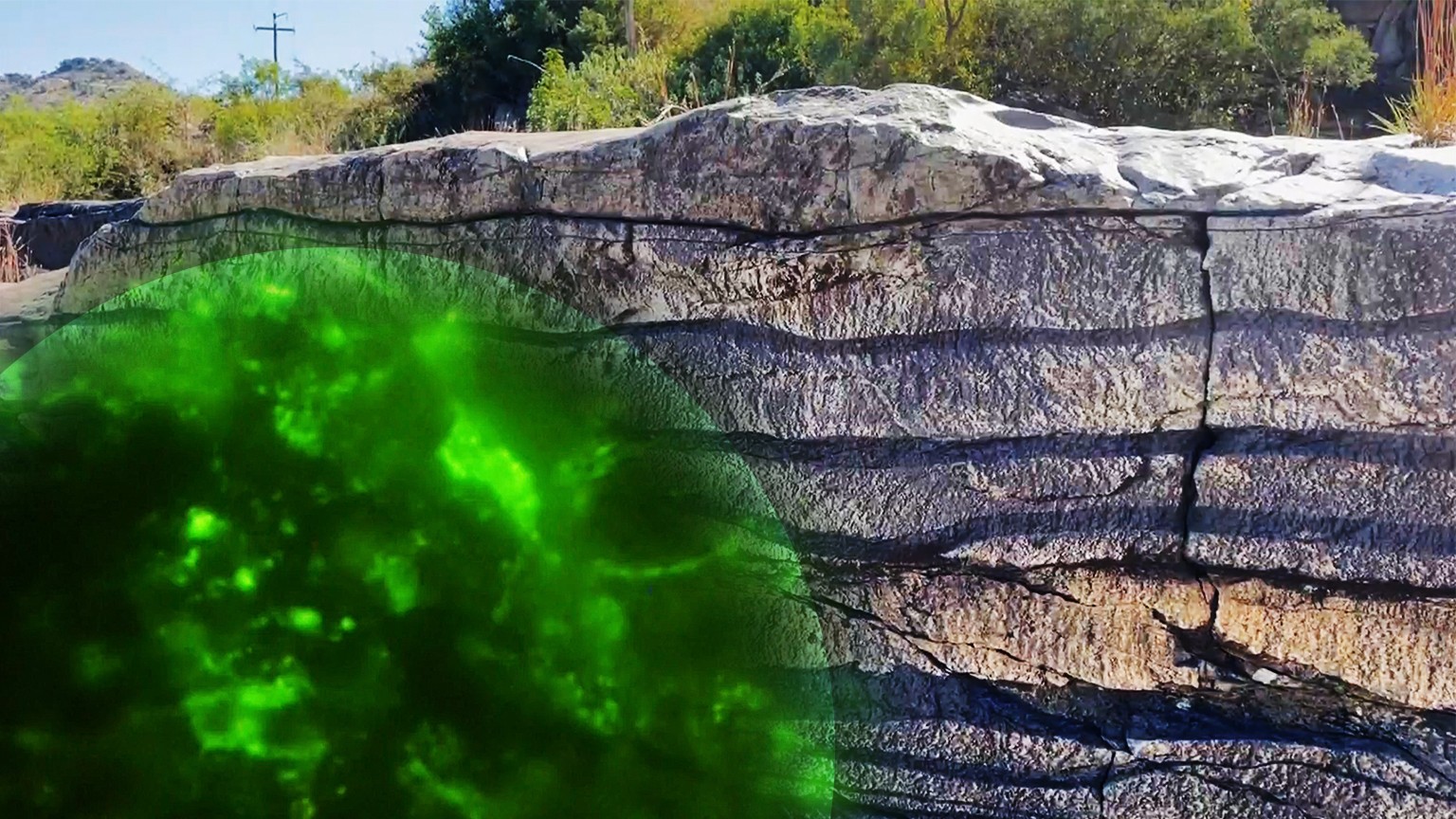The find is considered valuable for two reasons.
First is the time period. The oldest living microorganisms found so far are from about 100 million years ago.
The other point is that DNA and genome analysis may be possible. If the microorganism hasn't evolved in two billion years, it is highly likely to retain the characteristics of some of the earliest organisms that developed on earth.
2-billion-year-old igneous rock from South Africa
The rocks where the microorganisms were found were brought back from South Africa by geomicrobiologist Suzuki Yohey, an associate professor at the University of Tokyo.

Suzuki is a member of a project conducting scientific drilling at the Bushveld Igneous Complex in northeastern South Africa.
The area is one of the world's richest sources of rare metals such as chromium and platinum.
It is believed that a 480 by 240 kilometer section of the underground mantle formed large-scale rock strata for a depth of 8 kilometers two billion years ago.
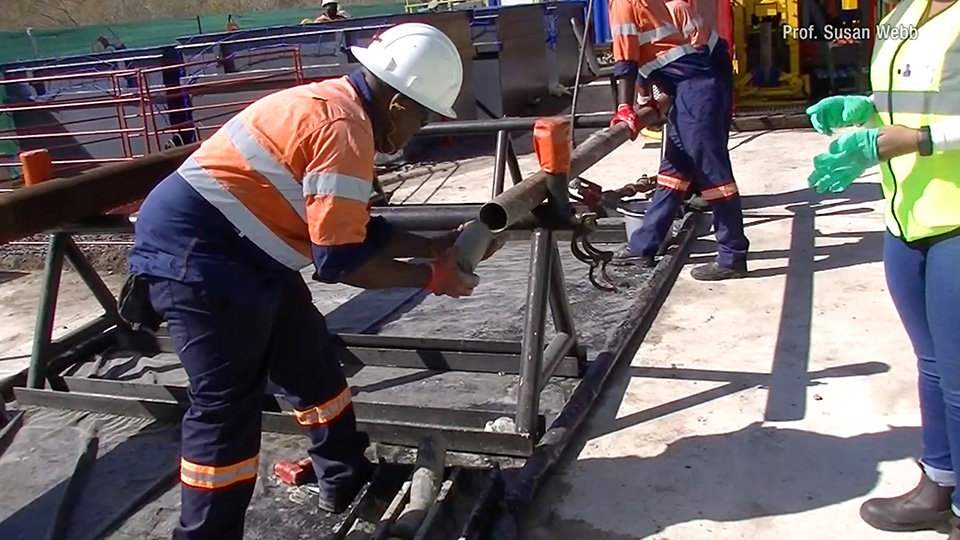
The international team plans to drill to a depth of 2.5 kilometers over a year to clarify its formation and structure. By the end of June, the team had drilled down 500 meters.
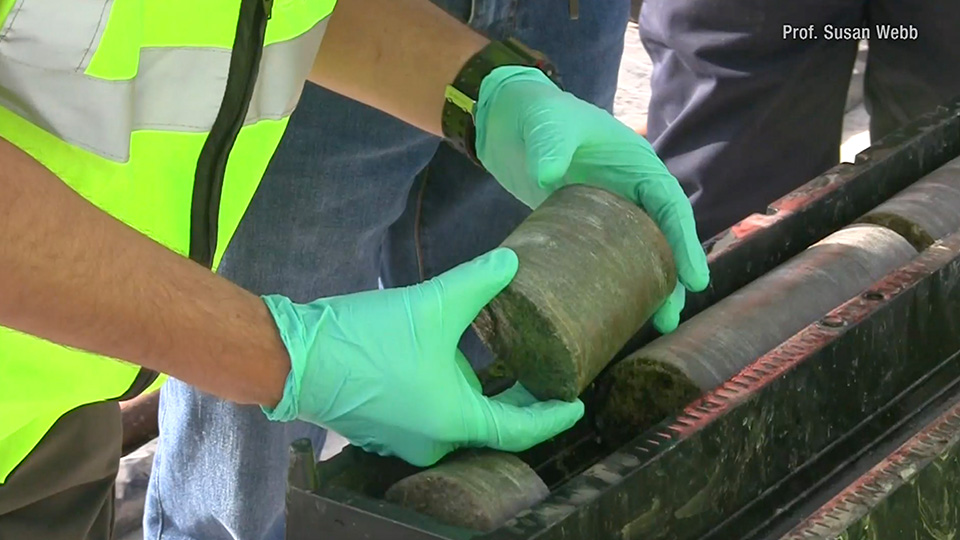
Astounding discovery
Suzuki brought back some of the rock samples to Japan.
He detected a large number of microbes in a fissure in the rock. Further analysis showed that the microbes have cells containing DNA and proteins that can only be generated by living things.
Suzuki says this evidence strongly suggest the microbes are still alive.
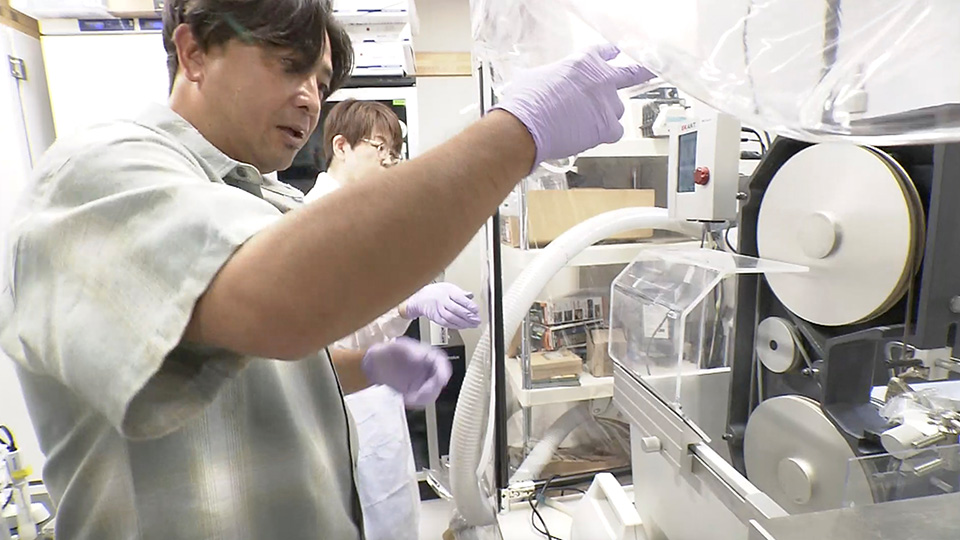
The team says the strata where the drilling was done are known to have been stable since their formation, and it is likely that the primordial microbes dating back to two billion years ago have survived inside the rocks.
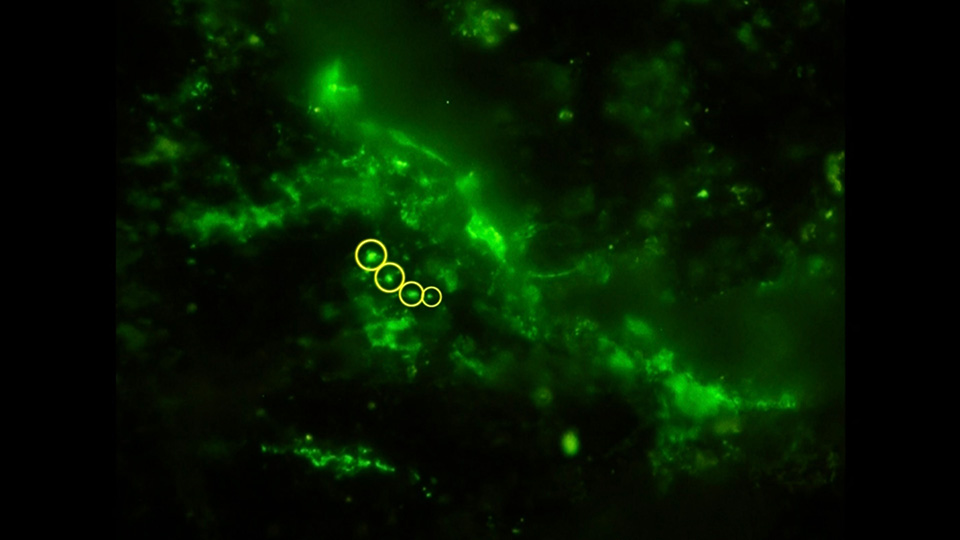
Underground life zone attracts attention
The geomicrobiology field has been attracting a lot of attention recently.
The environment deep underground is considered to be extremely harsh, with no oxygen or light and little nutrition.
But recently improved technology has revealed that a large number of microorganisms can exist in such an environment. They may even exceed the number of those existing aboveground and in the sea.
Living in the rocks
One of the mechanisms that supports the underground ecosystem is the reaction between some types of rock and water. Hydrogen and methane are produced in this reaction, which feeds the microorganisms in the rocks, enabling them to live for a long time.
And it is known that the rocks in South Africa contain an abundance of a mineral called olivine, which tends to cause the reaction.
Evolution is slow underground
There has been no precedent of microorganisms being investigated in strata at the age of several billion years. And Suzuki believes that the microorganisms that existed so long ago in South Africa might still be alive.
A study by another group also found that most underground microorganisms are extremely slow to evolve, even over 100 million years.
Suzuki says the microbes may be completely different from any other known living creature. The discovery therefore could upend all existing biological knowledge. He expects the ancient microorganisms to provide a key to unlocking the mysteries of the origins of life.
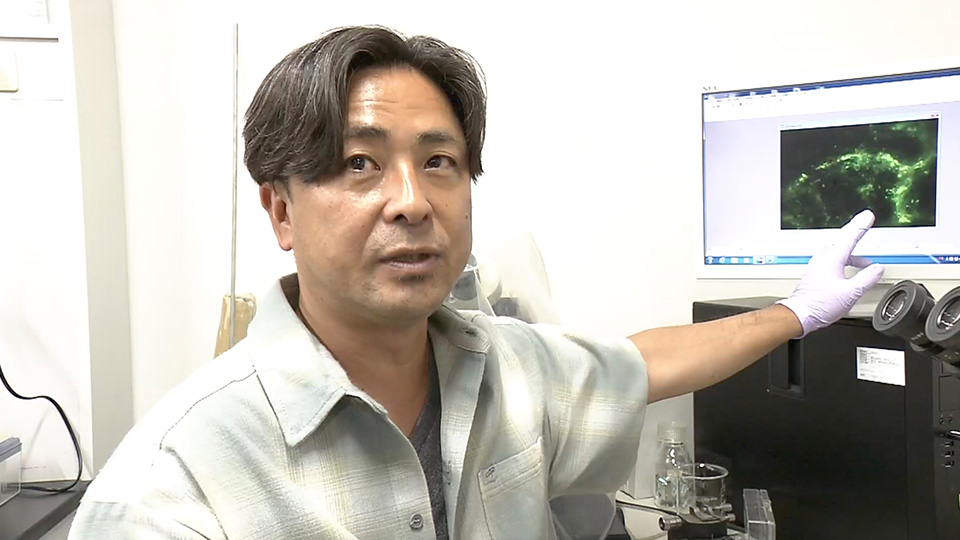
Science's biggest mystery: The origin of life
It is estimated that life began on earth about four billion years ago, but there is still debate about where and how it occurred.
Deep-sea hydrothermal vents and onshore hot springs have been listed as leading candidates for the spawning of life, and it is believed single-cell prokaryotes were the first lifeforms. And about two billion years ago, eukaryotes evolved, eventually leading to plants, animals and humans over a long period of time.
Such evolution has been estimated mainly from small traces of organisms and fossils.
The significance of 'living' microorganisms
At this point, the oldest trace of life is believed to be from 2.7 billion years ago, and scientists are divided over what happened before that.
"Living" microorganisms would make it possible to analyze DNA and genomes.
If the recently found microorganisms have hardly evolved in two billion years, it is highly likely they will contain the characteristics of the earliest organisms to appear on earth.
Expert: Opening a treasure chest
Fujishima Kosuke is an associate professor at the Tokyo Institute of Technology who specializes in the origin and evolution of life. He said he had never heard of trapped, living microorganisms, although there are many rocks and minerals from two billion years ago.
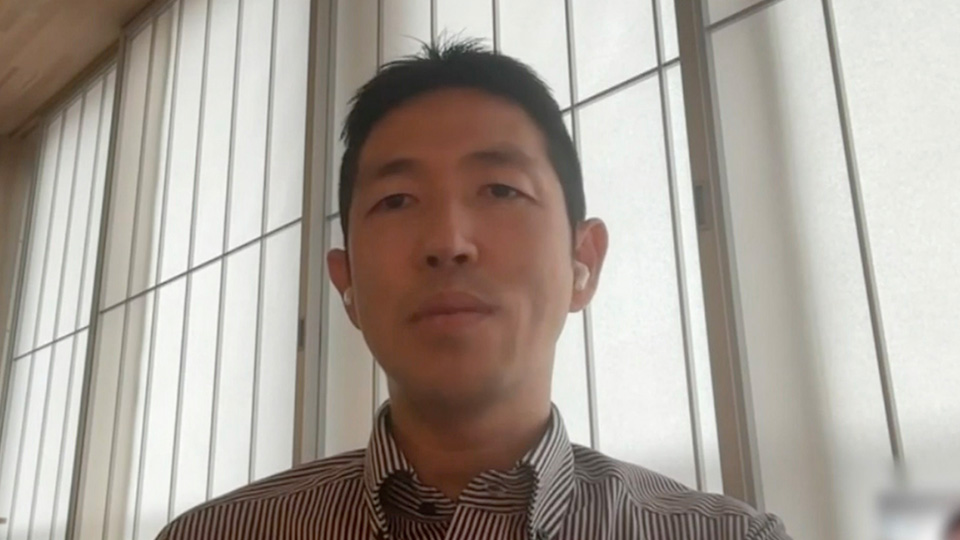
He says it is necessary to analyze genomes in order to confirm the age, but he pointed out that genetic information will be revealed at the same time and it will clarify what kind of evolution has occurred.
Fujishima expressed hope, saying, "This research will not only approach the origin and evolution of life on earth, but also lead to finding microorganisms in rocks on other planets — such as Mars."
